|
FOCUS / FORUM
INDEX
|
 |
In 2008, the Forum Comment,
was relaunched as the Focus
reflecting the closer comment from
NEMP and the panel of educators. |
 |
|
Main Index for Focus / Forum
Introduction
to Focus / Forum
He
Whakaputanga Whakaaro –
Introduction for Mäori
Medium forums
|
| Forums by year of assessment |
|
|
|
Science
Art
Graphs, Tables & Maps
|
|
|
|
Music
Aspects of Technology
Reading & Speaking |
|
|
|
Information
Skills
Social Studies
Mathematics |
|
 |
|
Listening
& Viewing
Health & Phys. Ed.
Writing |
|
| Forums for Mäori Medium |
|
|
|
Science
Art
Graphs, Tables & Maps
|
|
|
|
Music
Aspects of Technology
Reading & Speaking |
|
|
|
Information
Skills
Social Studies
Mathematics |
|
 |
|
Listening
& Viewing
Health & Phys. Ed.
Writing |
|
|
|
|
|
 |
|
|
|
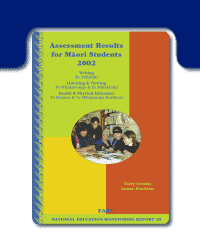
CLICK
on cover above for full 2002 report
|
|
|
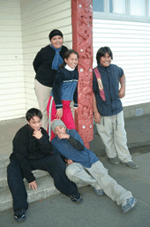 |
I
te tau 2002, i haere tahi te aromatawai i tëtahi
hunga
äkonga tau 8 o roto i ngä kura reo Mäori,
me te kaupapa aromatawai whänui a NEMP. Ko te whäinga
matua o te aroturuki ä-motu, kia äta möhiotia
ai he aha ngä mahi e taea ana e ä tätou
tamariki. He matatini ngä ngohe aromatawai, arä,
he rerekë
te ähua, te huarahi tuku, me te taumata o ngä ngohe,
ä, e arotahi ana ki te whänui o ngä pükenga
me te mätauranga.
Kei roto i te pürongo a NEMP Ngä Hua Aromatawai
a ngä Äkonga Mäori 2002 – Te Whakarongo
me te Mätakitaki, Te Tuhituhi, |
Te
Hauora me te Mätauranga Korikori ngä hua
i puta ki ngä äkonga Mäori tau 8 o
roto i ngä kura reo Mäori, o roto hoki
i ngä kura reo Päkehä. Kua äta
tirotirohia, kua wänangahia te pürongo
e tëtahi kähui kaiako kaupapa Mäori
e hono ana ki a NEMP. Kei tënei Whakaputanga
Whakaaro te whakaräpopoto o tä rätou
wänanga i
te pürongo. |
In
conjunction with the 2002 assessment programme in general
education, NEMP assessed a national sample of year 8 students
in Mäori medium education. National monitoring focuses
on what students know and can do. The tasks use a wide variety
of formats and approaches. They are at various levels of
complexity and cover a range of important skills.
The results for year 8 Mäori students in immersion education
along with the results for year 8 Mäori students in general
education are given in the NEMP report, Assessment Results
for Mäori Students 2002 – Listening & Viewing,
Writing, Health & Physical Education. The report has
been considered by an invited forum of Mäori educators
who have been associated with the Project. Their response to
the report is given in this Forum Comment.
IMPORTANT
NOTE RE TRANSLATION: Translations for each 'He Whakaputanga
Whakaaro' and report are historic, reflecting the translation
as at the time of printing. Variations in translation
may therefore occur from one year to the next. |
| TE
WHAKARONGO 2002 |
 |
LISTENING
2002 |
Hei
Whakatai
He
maunga teitei tonu nga mätätaki mö te aroturuki ä-motu
kia örite ai te taumata o tëtahi ngohe aromatawai
i roto i ngä reo e rua. He rerekë hoki te ähua
o te ngohe whakarongo ki te ngohe tuhituhi – kotahi anake
te wä whakarongo hei hopu mä te äkonga i te
matü me ngä taipitopito o te körero. I ëtahi
wä, kotahi anake te kupu tauhou,
ä, ka raruraru te whakarongo a te äkonga ki konä.
E tino pono ana te Kähui Whakawhitiwhiti Körero,
nä ngä
hapa reo o roto i ngä ngohe reo Mäori i tino raru
ai ngä
äkonga, ä, koirä te take i raro iho ngä hua
aromatawai a ngä äkonga reo Mäori i ërä o
ngä äkonga reo Päkehä.
Tekau
katoa ngä ngohe whakarongo. Kei runga ake ngä hua
aromatawai i riro i ngä äkonga Mäori o
ngä kura reo Päkehä
i ngä hua o ngä äkonga o roto i ngä kura
reo Mäori. E rua, nui ake ränei ngä pükenga
whakarongo i roto i te nuinga o ngä ngohe aromatawai, ä,
ka pä te nuinga o ënei pükenga ki te whakaaro
höhonu. Ko tä te
äkonga, he whakamahi i ngä pükenga matatini
i te wä
kotahi (përä i te hïkaro, te arohaehae, te
tätari, me te kötuitui möhiohio), hei whakaputa
whakatau, hei arotake möhiohio. He rite tahi te whäinga
a ngä pouako i roto i ngä kura reo Päkehä me
ngä kura reo Mäori, kia mau pai i ngä äkonga ënei
momo pükenga whakarongo, engari kei runga tonu i te ähua
o te whakaako, ngä rauemi e wätea ana, me ngä kaupapa
tautoko i ngä pouako, te whakatutukitanga o te whäinga.
Ngä Ähuatanga Pai
Häunga ëtahi ngohe e rua, he nui ake
i te 43 örau o ngä äkonga o ngä kura
reo Mäori i riro i tëtahi mäka o waenganui,
rahi ake ränei. He tüäpapa tënei
mö te haere whakamua. Käore e kore ka piki
tonu ngä
äkonga i runga i te ruruku o te waihanga rauemi me te
arotahi ki te ähua o te whakaako i ngä pükenga
whakarongo.
Ngä Take
E tika ana
kia kaha ake ngä momo whakaako e piki ai te ähei
o ngä äkonga ki te whakaaro höhonu. E hängai
ana tënei whakahau ki ngä kura reo Päkehä me
nga kura reo Mäori.
Te
Tiro Whakamua
Kia maha tonu ngä wheako hei whakapakari i ngä pükenga
whakarongo o ngä äkonga, me te arotahi
anö ki te tätari, te whakahängai,
te kotuitui me te arotake.
Me matua whakaako hoki ngä hanga reo me ngä kupu
motuhake e pä ana ki ngä ariä toi
o ngä marautanga. Mä
te pouako tonu e whakatauira te reo me ngä pükenga,
mäna hoki e äta whakamärama ngä paearu,
e whakahoki körero ki te äkonga hei äwhina
i a ia ki te mau i ngä pükenga whakarongo.
Me tïmata tonu te whakaako ki ngä horopaki
e taunga ana ngä äkonga me ngä wheako ä-tïnana,
koirä hei tüäpapa mö ngä horopaki
me ngä
mahi hou.
Me arotahi anö ki ngä pükenga whakarongo
hei whakapakari i te reo o te äkonga, i roto
i ngä marau katoa o te kura.
|
|
Introduction
The
development of listening tasks for national monitoring
presents major challenges in achieving task equivalency
between English and Mäori. Unlike tasks presented
in written formats, students have only one opportunity
to understand the meaning of the listening text,
and often one word can complicate comprehension for
the whole text. The forum is strongly of the opinion
that language discrepancies and inconsistencies were
a major factor contributing to differences between
students in both English and Mäori settings.
There were ten tasks in all. Mäori students
in English medium scored significantly higher in
all ten tasks. The majority of tasks required students
to attend to at least two skills at a time, and
most of these skills involved higher order thinking.
Students had to employ a combination of skills
at any one time (inference, critical thinking,
analysis, synthesising information) in order to
draw conclusions and evaluate information. As in
English medium education, teachers in Mäori
medium education aim to help students master such
skills, bearing in mind that skill development
depends on appropriate resourcing, continued professional
support, and the explicit teaching of such skills.
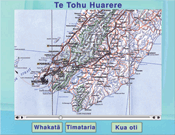 Good
news Good
news
On
all except two of the ten tasks, more than 43 percent of
Mäori medium students scored in the middle score category
or higher. This indicates that there is a solid base to build
upon. With continued emphasis on co-ordinated resourcing
and attention to explicit teaching in specific areas, it
seems reasonable to expect that students will continue to
make gains.
Concerns
It
is incumbent upon all involved in educating Mäori
students to make a concerted effort to increase their ability
to use higher order thinking skills. This applies equally
for students in English medium and Mäori medium schools.
Looking
ahead
Students
need plenty of opportunities to practise listening
skills, particularly those of application, analysis,
synthesis, and evaluation.
Teaching students vocabulary and the language structures
to support technical concepts is crucial to developing
understandings. Teachers need to model the skills,
make explicit the criteria, and provide helpful
feedback to students. Continued good practice of
starting with contexts familiar to the students
then providing concrete experiences for the less
familiar contexts will provide a solid base.
There is a need to target listening skills as part
of language acquisition across the curriculum.
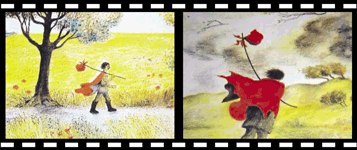
|
| |
|
|
TE
MÄTAKITAKI
|
|
VIEWING |
Hei
Whakatai
Ahakoa
huri ki hea, kitea ai ngä momo karere ataata
o te ao o näianei,
ä, he mea nui kia mätau ä tätou
tamariki ki tënei huarahi whakawhitiwhiti
whakaaro. Ahakoa te ruarua o ngä rauemi reo
Mäori mö te whakaako i ngä pükenga
mätakitaki, he örite te ekenga paetae
o ngä äkonga o roto i ngä kura reo
Mäori ki ërä o ngä
kura reo Päkehä.
Ngä Ähuatanga Pai
He ähua
örite ngä hua i puta ki ngä äkonga
o ngä
momo kura e rua. He örite i roto i ngä ngohe
aromatawai e 6. He teitei ake te taumata a te hunga äkonga
o ngä
kura reo Mäori i roto i ngä ngohe e rua, ä,
e rua anö ngä ngohe he teitei ake ngä äkonga
o ngä
kura reo Päkehä.
He kaha ake ngä äkonga o ngä kura
reo Mäori mënä he kaupapa Mäori
i roto i te ngohe.
Ngä Take
Ahakoa te
rite o ngä hua i riro i ngä äkonga o ngä momo
kura e rua, he nui tonu ngä ähuatanga o te mätakitaki
hei whakapakari. E tika ana kia mau i ngä äkonga
ngä
hanga reo me ngä kupu hei whakaputa whakaaro mö te ähua
o te whakaaturanga e mätakihia ana. Me märama hoki
ki te wairua o ngä momo horopaki, me te whakapakari
anö i ngä pükenga arotake i te ähua o
ngä momo whakaaturanga.
Te
Tiro Whakamua
Me äta
whakaako te reo whakamärama i te ähua o
tëtahi whakaaturanga, e taea ai ngä körero
o roto,
me te papätanga o te whakaaturanga te arotake.
Arä:
• kia
märama te äkonga ki te wairua o tëtahi
whakaaturanga, kia ähei hoki ki te whakaputa körero
mö taua wairua
• kia mau i te äkonga te reo whakaputa whakaaro
mö
te whaitake o tëtahi whakaaturanga
• kia ähei te äkonga ki te arohaehae,
ki te arotake, ki te whakawä hoki
Me kötuitui
te mätakitaki ki ngä marautanga me ngä kaupapa
ako katoa o te kura, ä,
me arotahi ki ngä pükenga o te whakaaro höhonu,
përä
i te arotake me te tätari. |
|
Introduction
Visual messages are prominent in today’s world and an
important part of interpersonal communication. Given the paucity
of material available in te reo Mäori for teaching visual
language skills, the fact that Mäori medium students scored
as well as their counterparts in English medium is admirable.
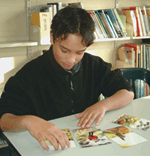 Good
news Good
news
The performance of students in both settings was
relatively even. They performed comparably on 6
of 10 tasks. Students in Mäori medium performed
significantly better on two tasks as did Mäori
students in English medium.
Students in Mäori medium did better when the
task had Mäori cultural content.
Concerns
Notwithstanding the evenness of results, performance
on these tasks indicates that there is room
for significant improvement for Mäori
students in both settings. Students require
relevant language and language structures to
discuss imagery. They have to understand
‘mood’ in its various contexts,
and practice the necessary skills for evaluating
images.
Looking
ahead
The
language of ‘imagery’ is necessary if
students are to discuss its impact
and evaluate its messages. Students need:
•
to understand and articulate what constitutes mood,
• the language to articulate effective images,
• the ability to discern, discriminate, and evaluate
or make judgements.
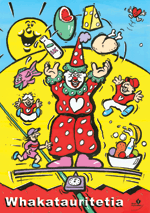 |
It
is important that viewing is an integral part of
teaching programmes across the curriculum, focussing
in particular on higher order thinking skills such
as evaluating and analysing. |
|
| |
|
|
TE
TUHITUHI
|
|
WRITING |
Ngä
Ähuatanga Pai
He
maha ngä ähuatanga pai o ngä hua i puta ki
ngä äkonga Mäori mö te tuhituhi i te
tau 2002.
Tekau mä ono katoa ngä ngohe tuhituhi, ä,
he ähua
örite te ekenga paetae o ngä äkonga Mäori
o ngä momo kura e rua mö te 11 o ënei ngohe.
He kaha ake ngä äkonga o ngä kura reo Mäori
i roto i ngä ngohe e toru, ä, e rua ngä ngohe
he kaha ake ngä äkonga o ngä kura reo Päkehä.
He pai tonu te mahi a ngä äkonga i roto i ngä ngohe
äta tütohu, äta raupapa hoki, përä i
te tuhi reta, te tuhi käri poutäpeta, me te tuku
i te tuhinga waea pükoro. He hua pai tënei mö te
hunga äkonga o ngä kura reo Mäori, ina he
ruarua tonu ngä wähi e kitea ai ënei momo
tuhinga i roto i te reo Mäori i waho atu i te kura.
Ko ngä momo tuhituhi e pai ana ki ngä äkonga
o ngä
kura reo Mäori, ko te tuhi reta, me te tuhi körero
i roto i ëtahi atu o ngä marautanga. Ko tä te äkonga
o ngä kura reo Päkehä i pai ai, ko te tuhi
möteatea me te tuhi rätaka. He pai ki ngä röpü e
rua te tuhi pakiwaitara, engari he ruarua ngä äkonga
e huri ana ki te tuhituhi körero i waho atu i te kura.
E ai ki ngä
äkonga o ngä momo kura e rua, ko te mätau
ki ngä
tohutuhi, ko te tätaki kupu, ko te whakatika tuhituhi ëtahi
ähuatanga matua o te mahi tuhituhi.
E ai ki ngä äkonga Mäori o ngä kura
reo Päkehä, ko te tokonga whakaaro tëtahi ähuatanga
o te kaituhi mätau tonu. E kaingäkau ana ngä äkonga
o ngä kura reo Mäori ki te torotoro i ngä ähuatanga
hou o te tuhituhi. He rawe te whakakitenga i te maha o
ngä äkonga e whakamahi rorohiko ana i te käinga
ki te tuhi pakiwaitara,
ä, ko ngä äkonga o ngä kura reo Mäori ërä.
He koanga ngäkau hoki te körero mai a ngä äkonga
ko ö rätou mätua me ö rätou hoa
te tino hunga hei pänui i ä rätou tuhinga.
Ngä
Take
Ko
te tohutohu me te whakawhere ngä momo tuhituhi
i roto i ngä ngohe e toru i kaha ake ai ngä äkonga
o ngä kura reo Mäori. E rua ngä ngohe
mö te tuhi whakawhere i kaha ake ko ngä
äkonga o ngä kura reo Päkehä.
He mea uaua ki ngä äkonga o ngä röpü e
rua ko te tautohetohe me te parahau i tä rätou
i tohe ai. Me äta whakapakari, me whakatenatena ënei
momo pükenga reo.
Te
Tiro Whakamua
Me äwhina
ngä äkonga kia märama ki ngä ähuatanga
ake, ngä kaupapa me ngä tümahi o te
tuhituhi, ä, me whakapakari anö ko ngä pükenga
e hängai ana. Ahakoa te pai o ngä äkonga
o ngä kura reo Mäori ki te tautuhi i ngä möhiohio
meka e hängai ana i roto i tëtahi tuhinga,
käore rätou i äta whakamahi i ngä möhiohio
meka kia märama, kia arotau ä
rätou tuhinga mö tëtahi kaupapa.
Käore ngä äkonga i tino whakamahi
i ngä tohutö
i roto i ngä tuhituhinga i whakaaturia ki
te pürongo. Me arotahi atu te hunga pouako
ki tënei tikanga tuhi i roto i ngä akoranga, ä,
me kötuitui anö ki ngä
akoranga e pä ana ki te tätaki kupu,
te tohutuhi, me te wetereo.
Kia maha tonu ngä mahi torotoro i ngä momo
tuhinga me ngä kaupapa o ngä momo tuhinga,
kia whai wähi anö
ki te hopu i ngä tauira tuhituhi a te pouako,
me te whakapakari anö i ngä pükenga
tuhituhi e hängai ana. E tika ana kia whakahokia
he körero ki te äkonga, e hängai
pü ana ki ngä paearu o ngä tuhinga, ä,
kia maha hoki ngä wä ka tukuna ngä tuhinga
hei pänui mä ëtahi atu.
|
|
Good
news
The
2002 assessment results for Mäori students have a number
of positive aspects.
Students in English medium and Mäori medium performed
comparably across 11 of 16 tasks. Mäori medium students
performed significantly better on three of the tasks. Likewise,
Mäori students in English medium performed better
on two.
Both groups of students performed well on tasks that were
prescriptive and structured in nature – letter writing,
postcards, text messaging, and a structured writing process.
This is a positive result considering that Mäori medium
students have fewer opportunities to view such text in
Mäori outside of the school setting.
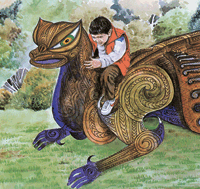 At
school, Mäori medium students enjoyed writing
letters and writing in other curriculum areas. Mäori
in English medium preferred writing poems and keeping
a diary. Both groups got equal satisfaction from
writing stories. In both settings, fewer students
chose to write in their own time. At
school, Mäori medium students enjoyed writing
letters and writing in other curriculum areas. Mäori
in English medium preferred writing poems and keeping
a diary. Both groups got equal satisfaction from
writing stories. In both settings, fewer students
chose to write in their own time.
It is interesting to note that both groups of students
identify mastery of punctuation, spelling and editing as
necessary to the writing process.
Mäori students in English medium think a good writer
uses their imagination. Mäori medium students regarded
trying out new things as highly valuable. It is positive
to see that a substantial number of students use a computer
at home to write stories, particularly Mäori medium
students. It is heartening that students see their parents
and friends as important audiences for their writing.
Concerns
The
three tasks Mäori medium students did better on involved
writing instructions and persuasive writing. Mäori
students in English medium did better on two tasks involving
persuasion. Both groups of students had difficulty in making
strong arguments and justifying their stance. Their skills
and the associated language competencies in these areas
need much encouragement and development.
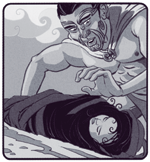 Looking
ahead Looking
ahead
Students
need to be helped to recognise and understand the
features, purposes and functions of text and to have
opportunities to practise the associated skills.
Although Mäori medium students identified factual
and relevant information, they ignored using the
factual detail to provide a clear and logical account
of an event.
The forum noted the consistent omission of macrons
in the examples tudents’ writing shown in
the NEMP report. This needs to be taken into account
during instruction, and incorporated into the teaching
of conventions of writing – spelling, punctuation,
and grammar.
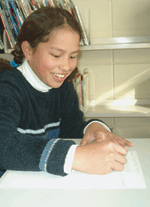 Students
need plenty of opportunities to explore different
forms and purposes of writing, to observe teacher
modelling, and to practise the necessary skills.
They also need to receive specific feedback on criteria,
and frequent opportunities to share their writing
with others. Students
need plenty of opportunities to explore different
forms and purposes of writing, to observe teacher
modelling, and to practise the necessary skills.
They also need to receive specific feedback on criteria,
and frequent opportunities to share their writing
with others. |
| |
|
|
TE
HAUORA
|
|
HEALTH |
Ngä
Ähuatanga Pai
Ko
ngä
hua i puta ki ngä äkonga o ngä kura reo
Mäori i te tau 2002, ngä hua teitei rawa atu
mai i te wä i tïmata ai ngä mahi aromatawai
i roto i ngä kura reo Mäori. He tino përä ngä hua
i puta mö ngä ngohe hauora. E 28 katoa ngä ngohe
hauora. I roto i ngä ngohe 19, he örite te ekenga
paetae a ngä äkonga o ngä
momo kura e rua. He teitei ake ngä äkonga o ngä kura
reo Mäori mö ëtahi ngohe e 8.
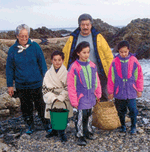 I
roto i ngä urupare a ngä äkonga, e
tino kitea ana te ngäkau pai o te äkonga
Mäori ki te noho tahi o te hapori. He kaha ngä äkonga
i roto i ngä ngohe e hono ana ki ö rätou
wheako whaiaro, me ngä ngohe e whakaata mai
ana i ngä uara a te Mäori. He kaha te kitea
mai o te ngäkau whakawhanaunga o ngä äkonga
o ngä
kura reo Mäori. Ka whakamäramahia ngä momo
rautaki përä i te äwhina ä-ringa, te
körerorero, te whakatenatena hei äwhina i tëtahi
atu tangata ki te kawe i ngä mätätaki ka
tau ki a ia. Mö ngä
äkonga o ngä kura reo Mäori, käore
i te përä
rawa te wehe mai o te kura me te te käinga. I
roto i ngä urupare a ngä äkonga, e
tino kitea ana te ngäkau pai o te äkonga
Mäori ki te noho tahi o te hapori. He kaha ngä äkonga
i roto i ngä ngohe e hono ana ki ö rätou
wheako whaiaro, me ngä ngohe e whakaata mai
ana i ngä uara a te Mäori. He kaha te kitea
mai o te ngäkau whakawhanaunga o ngä äkonga
o ngä
kura reo Mäori. Ka whakamäramahia ngä momo
rautaki përä i te äwhina ä-ringa, te
körerorero, te whakatenatena hei äwhina i tëtahi
atu tangata ki te kawe i ngä mätätaki ka
tau ki a ia. Mö ngä
äkonga o ngä kura reo Mäori, käore
i te përä
rawa te wehe mai o te kura me te te käinga.
He koanga ngäkau te kitea o ngä uara me ngä ähuatanga
matua e tino whäia ana e ngä kura reo Mäori
e whakaatatia ana i roto i ngä hua i puta mö ngä ngohe
hauora.
Ngä
Take
Ko
te hauora me te oranga kiritahi te wähi hei
whakapakari ake, nö
reira koirä te kaupapa hei whakauru ki ngä akoranga.
Arä ëtahi äkonga, he poto, he päpaku
ngä
whakahokinga körero, käore i äta
tutuki te whakawhitiwhiti mai i ö rätou
whakaaro. He iti tonu te puna kupu a ëtahi
äkonga tokomaha, e tutuki pai ai te whakamärama
i ngä
wähanga o roto i tëtahi kaupapa. Käore
hoki i tino eke te äkonga mënä kotahi
anake te take, te whakamärama ränei i
roto i tana whakautu.
Te
Tiro Whakamua
Me äta
whakaako ngä kupu me ngä hanga reo e hängai
pü ana ki ngä kaupapa hauora. Mä konei
e pakari ai ngä pükenga whakamärama,
ngä pükenga parahau me ngä pükenga
tätari. Mä te pouako tonu e whakatauira, ä,
kia maha hoki ngä horopaki hei urupare mä te äkonga
i ngä
momo pätai huhua. Ina pakari haere te reo
Päkehä, te reo Mäori ränei
o te äkonga, me whakatenatena kia whakawhänui
i äna urupare, kia kapi katoa ngä
taipitopito o te kaupapa.
E tino whakamahia ana ngä momo pätai
tuwhera i roto i ngä äkoranga whaihua, ä,
me ako kia whänui tonu te urupare a te äkonga.
Mä konei e pakari ai te äkonga i roto
i äna whakawhitiwhitinga, ä, ka whaimana
anö
ki töna ao. He mea nui kia whai wähi
atu te äkonga ki ngä momo ngohe pähekoheko
e whakawhitia ai he whakaaro höhonu, hei whakapiki
anö i tana ako i roto i te hauora.
Me tïmata tonu ngä akoranga ki nga horopaki
e taunga ana ngä äkonga, ä, kia
whai wheako ä-tinana ki ngä
horopaki käore e taunga ana, me te arotahi
anö ki ngä
pükenga parahau me nga pükenga arotake.
|
|
Good
news
Mäori
assessment in 2002 marks the highest level of achievement
measured for Mäori medium students since NEMP began
working in the medium of Mäori language. In health tasks,
the level of success is particularly high. Mäori students
in both Mäori and English medium settings performed
equally well on 19 of the 28 health tasks. Mäori medium
students achieved statistically significantly higher on a
further 8 tasks.
Responses demonstrate the importance to Mäori students
of social responsibility. Students performed well in tasks
where they could relate the context to their personal experiences.
Tasks presented in a manner promoting the reflection of
cultural values also yielded positive results.
For Mäori medium students in particular, a strong
sense of community was evident in their responses to tasks.
Strategies described involved the use of practical solutions,
such as hands-on assistance, talking and encouragement
to help others cope with challenges. The boundaries between
the family and the school setting appeared less rigid for
Mäori medium students than Mäori students in
English medium.
It is pleasing to note that priorities valued and emphasised
in Mäori medium schooling are reflected in a number
of the tasks in which they performed well.
Concerns
Results
from this year’s health tasks suggest that in the
area of maintaining and enhancing personal health and well-being,
more direct teaching is required.
Students whose responses were limited to short, basic
phrases were unable to communicate their thinking effectively.
Students frequently lacked the vocabulary to express
themselves clearly in tasks where specific knowledge
of procedures or explanation of stages was required.
Similarly, those who could give only one reason or possible
explanation for a situation were unable to score highly.
Looking
ahead
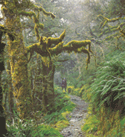 Active
teaching of the language structures and vocabulary directly
related to health topics is needed. This in turn will support
the skill of explanation, justification and reasoning.
With teacher modelling, students need considerable opportunity
to practise responding to a wide variety of question types.
Planning is also needed to ensure that as students develop
competency in te reo Mäori and te reo Päkeha,
they are continually encouraged and challenged to extend
and give detail in their responses. Active
teaching of the language structures and vocabulary directly
related to health topics is needed. This in turn will support
the skill of explanation, justification and reasoning.
With teacher modelling, students need considerable opportunity
to practise responding to a wide variety of question types.
Planning is also needed to ensure that as students develop
competency in te reo Mäori and te reo Päkeha,
they are continually encouraged and challenged to extend
and give detail in their responses.
Just as good teaching practice ensures that students
are exposed to open-ended questioning, students also
need to learn to consider and express a range of possible
options in their responses. In this way, students develop
increasing power to interact with, and have control over
their environment. Quality teaching and learning experiences
that offer rich opportunities for learners to engage
in tasks and which value the sharing of elaborate, in-depth
understandings about content, are seen as paramount in
supporting Mäori students in health / te hauora.
Teachers should continue the good practice of starting
with contexts familiar to the students, then providing
concrete experiences for the less familiar contexts while
focussing on skills leading to justification and evaluation. |
| |
|
|
TE
MÄTAURANGA KORIKORI
|
|
PHYSICAL
EDUCATION |
Ngä
Ähuatanga Pai
He ähua
örite te ekenga paetae o ngä äkonga Mäori
o ngä kura reo Mäori me ngä kura reo Päkehä.
Tekau mä ono katoa ngä ngohe, ä, käore
i tino rerekë atu ngä momo kura e rua i roto
i ngä ngohe 13. He kaha ake ngä äkonga o
ngä kura reo Mäori i ëtahi ngohe e rua,
kotahi te ngohe he kaha ake ngä äkonga o ngä kura
reo Päkehä.
Te
Tiro Whakamua
I
tino kitea ngä pümanawa me ngä pükenga
o ngä äkonga Mäori o ngä momo kura
e rua ki te mätauranga korikori.
Äkene pea ko te kaha o ngä äkonga Mäori
i konei hei tüäpapa mö te whakapiki
i ngä pükenga ki ëtahi atu o ngä marautanga.
Hei tauira, ko te tuhi kauwhata hei whakaatu i te hoto
manawa (te pängarau); ko te tuhi pürongo
mö tëtahi tauwhäinga häkinakina
(te tuhituhi).
|
|
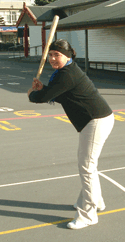 Good
news Good
news
The
performance of Mäori students in both Mäori medium
and English medium settings was generally even. They performed
comparably on 13 of 16 tasks. Mäori medium students
performed better on two tasks while Mäori students in
English medium did better on one of the tasks.
Looking
ahead
Mäori
students in both Mäori medium and English medium
settings show particular skills and talents in physical
education. These abilities and interests offer opportunities
for progressing students’
skills in other areas of the curriculum. For example,
graphing pulse rates as part of fitness activities
(mathematics); writing a newsletter report on a
games event (writing). |
| |
|
|
NGÄ
MÄTÄTAKI AROMATAWAI
|
|
ASSESSMENT
CHALLENGES |
Nö te
tau 1999 i tïmata ai te mahi aromatawai a Te Kaupapa
Aroturuki Mätauranga ä-Motu (NEMP) i ngä äkonga
o roto i ngä kura reo Maori. Koia nei te tau tuawhä e
uru ana rätou ki tënei kaupapa. He mahi höpara
tonu te aromatawai a NEMP i roto i ngä kura reo Mäori, ä,
ko tëtahi whäinga matua kia örite te taumata
o te reo Mäori e whakamahia ana i roto i ngä ngohe
aromatawai ki tö te reo Päkehä. E tautoko
tonu ana te Kähui Whakawhitiwhiti Körero i te ähua
o te mahi aromatawai a NEMP, me töna wähi ki
te whakapiki i te ekenga paetae o te tamariki Mäori.
Ko te mahi whakamäori i ngä ngohe aromatawai tëtahi
mätätaki nui, kia örite te taumata o te reo,
kia
örite te körero o roto, ä, kia märama tonu ä
tätou tamariki ki ngä tohutohu me te puku o ngä mahi.
Ko te whakawhänui i te kete kupu motuhake a te äkonga
mö ia marautanga, mö ia kaupapa ako tëtahi ähuatanga
nui, ina he iti noa iho ngä mahi whakawhanake kötuitui
i ënei tümomo kupu. Nä runga i tënei ähuatanga,
e whakamahia ana te reo whakawhitiwhiti körero o ia rä
hei whakatutuki i te reo mätauranga, e whai ana ränei
i te reo marautanga kua tipu mai i tënä whärua,
i tënä kokoru, i tënä käinga puta
noa i te motu. He mea uaua tonu tënei ähuatanga mö tëtahi
kaupapa aromatawai ä-motu. He äwhina nui mënä
ka whakakotahia ngä kupu motuhake o te marautanga ä-motu.
E ai ki ngä rangahau, kia rima tau rä anö te
tamaiti e whakaakona ana ki tëtahi reo, kätahi ka
tika te aromatawai i a ia ki taua reo. Nö reira i tonoa
ngä kura reo Mäori kia whiriwhiri i ngä äkonga
kua rima tau e whakaakona ana ki te reo Mäori. Ahakoa
tënei, kei reira tonu ngä
raruraru, ina ko te kura anake te puna reo Mäori mö te
nuinga o ä tätou tamariki. He ruarua noa iho ngä
wähi reo Mäori i waho atu i te kura hei puna whängai
i ngä taringa me ngä hinengaro o ngä tamariki.
Käore i te përä mö te reo Päkehä. Äpiti
atu ki tënei, i ëtahi kura, he whänui tonu te
matatau o ngä äkonga o te akomanga kotahi, he përä anö
hoki te reo o te hunga pouako.
Käore e ärikarika ngä mätätaki kei
mua i te hunga e whai ana kia eke ö tätou kura i
ngä
taumata tiketike, kia nui ake hoki ngä hua ka puta ki ä
tätou tamariki. Koinei te ähua o tënei momo
kaupapa aromatawai e para nei i te huarahi kia arotahi atu
ki ngä mahi e taea ana e ngä äkonga me ngä mätauranga
kua mau i a rätou, kaua ki ngä ähuatanga takarepa,
ki ngä ngoikore ränei o ngä äkonga Mäori,
ahakoa e ako ana i te kura reo Mäori, kura reo Päkehä
ränei.
Nä runga i ënei take kua körerohia nei, me äta
whakaaro, me äta tüpato ki ngä whakatairitenga
o ngä äkonga o ngä kura reo Pakehä, me
nga äkonga o roto i ngä kura reo Mäori.
E tika ana kia whakanuia ngä hua maha i puta i te kaupapa
aromatawai nei i tënei tau, arä, ko ngä hua
e pä ana ki te tuhituhi, ki te hauora me te mätauranga
korikori. Kei reira anö hoki ëtahi ähuatanga
o ngä kura reo Päkehä
me nga kura reo Mäori me whakapiki ake, kia pai ake ai
te ako o ä tätou tamariki.
Ngä Take
Rauemi
Me matua whai tonu ngä kaupapa nei:
• Kia
haere tonu te mahi whakaputa rauemi hei tautoko i ngä marautanga,
me te whakatü anö i ngä kaupapa whakapakari
pouako i te taha
• Kia pakari anö te taura e hono ana i ngä tari
käwanatanga, e nui ake ai te whai wähitanga
atu o ngä
tamariki ki te reo Maori me ngä momo rauemi reo
Mäori, përä i te reo irirangi me te pouaka
whakaata
|
|
Mäori
medium students first entered the National Education Monitoring
Project (NEMP) in 1999. This is their fourth year in the
project. Assessment in Mäori medium is still very
much exploratory, and although improvements in language
equivalency continue, achieving a better match is a crucial
goal. The forum members remain supportive of the NEMP approach
to national assessment and the contribution it makes to
improving the achievement of Mäori students.
 The
task of translating instructions and materials from English
to Mäori will always present very considerable challenges
to translators. The matching of language, and in particular
the language used for instructions, to language commonly
used in classrooms is particularly challenging. Technical
terminology and the corresponding language for developing
technical concepts can be the most challenging of all
for those in Mäori medium. The forum is mindful
that there has been very little coordinated development
of te reo Mäori with regard to the technical register
required for each curriculum area. This has resulted
in either the use of the everyday communicative language
for academic purposes, or local development of language,
both of which give rise to difficulties for national
assessment. In Mäori medium, the standardisation
of technical language and usage across the curriculum
is a step in the right direction. The
task of translating instructions and materials from English
to Mäori will always present very considerable challenges
to translators. The matching of language, and in particular
the language used for instructions, to language commonly
used in classrooms is particularly challenging. Technical
terminology and the corresponding language for developing
technical concepts can be the most challenging of all
for those in Mäori medium. The forum is mindful
that there has been very little coordinated development
of te reo Mäori with regard to the technical register
required for each curriculum area. This has resulted
in either the use of the everyday communicative language
for academic purposes, or local development of language,
both of which give rise to difficulties for national
assessment. In Mäori medium, the standardisation
of technical language and usage across the curriculum
is a step in the right direction.
Research
shows that students should have at least five years in
the target language before administering assessment. Hence
those in Mäori medium are asked to identify students
who meet this criterion. Notwithstanding, this remains
problematic since the school is the main source of language
development in Mäori medium. Unlike English medium,
there is often limited exposure to te reo outside of the
school environment for many students. An additional complication
is the range of language proficiency of students, and in
many instances the language proficiency of teachers.
One cannot underestimate the challenges of building capacity
in schools and maximising the effectiveness of existing
human and material resources in Mäori medium schools.
This is the reality of engaging in cutting edge work
in assessment which focuses on what Mäori students
know and can do, as opposed to a deficit model, regardless
of whether the students are in Mäori or English
medium schools.
Because
of the issues we have outlined, the interpretation of comparisons
between Mäori students in English medium, and Mäori
students in Mäori medium, should be treated cautiously.
There
is much to celebrate about the results, particularly in
writing, and health and physical education, yet there are
also a number of areas in both education settings for improvement
of our Mäori students’ learning.
Resourcing
Considerations
Continuation of the following goals is crucial:
•
On-going production and timely dissemination of resources
to support curriculum documents; with resourcing
and professional development occurring concurrently
• Establishing strong links between and across
government agencies to access more resources e.g. television
and radio
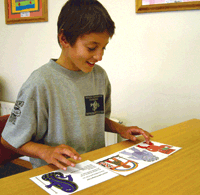
|
|
 |
| |
|